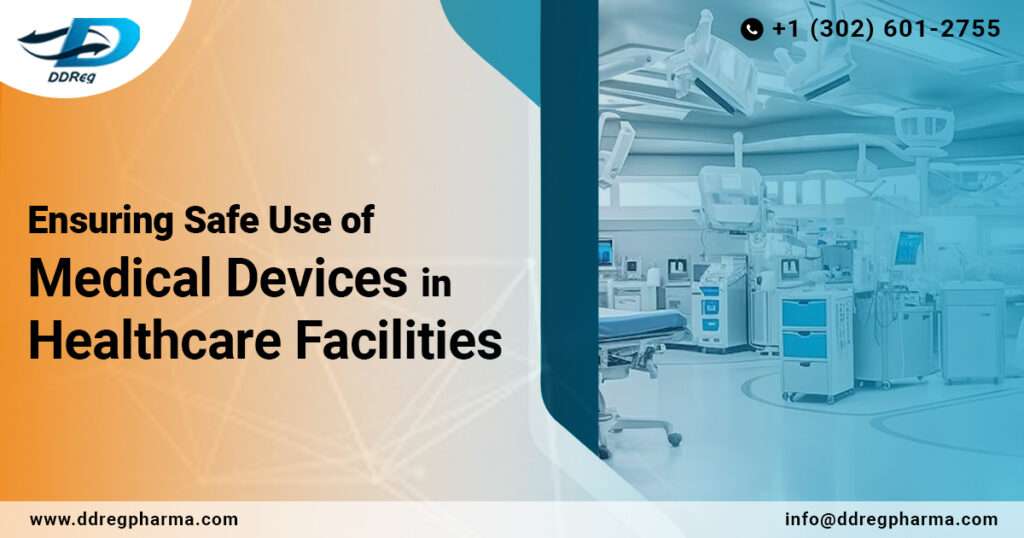The safe and effective use of medical devices in healthcare facilities is not merely a matter of convenience; it is a moral obligation. The welfare of patients and the quality of healthcare services depend on the responsible use of these devices. Accidents involving medical devices can have dire consequences for patients. These accidents may result from equipment malfunctions, maintenance lapses, user errors, infection control failures, or cybersecurity breaches. To mitigate these risks and prioritize patient safety, stringent regulations have been established worldwide. These regulations serve several critical purposes, including patient protection, maintaining healthcare quality, defining accountability in case of incidents, promoting best practices, and upholding public trust in the healthcare system.
Regulatory Authorities Ensuring Compliance
Regulatory authorities around the world play a pivotal role in ensuring the safety and effectiveness of medical devices. Here are some examples:
- FDA (Food and Drug Administration) in the United States: The FDA employs a comprehensive system of pre-market approval, post-market surveillance, and enforcement to regulate medical devices. Their regulations are designed to guarantee the safety and effectiveness of these devices.
- EMA (European Medicines Agency) in Europe: The EMA regulates medical devices in the European Union, where the Medical Devices Regulation (MDR) and In Vitro Diagnostic Regulation (IVDR) have been implemented to enhance device safety and traceability.
- TGA (Therapeutic Goods Administration) in Australia: TGA oversees medical devices in Australia, focusing on safety, efficacy, and quality. They manage device registration, post-market surveillance, and standards compliance.
- Health Canada: Health Canada regulates medical and in vitro diagnostic devices to ensure their safety and effectiveness, with established guidelines and regulations governing their use.
These regulatory authorities conduct rigorous assessments of medical devices, provide guidance to healthcare facilities, and monitor device performance to ensure safe and effective usage. They are indispensable in safeguarding patient health and upholding healthcare service quality.
Medical Device Guidelines by SFDA
The Saudi Food and Drug Authority (SFDA) is among the most stringent agencies withing the GCC region. It is committed to overseeing the regulation of pharmaceutical product and medical device, and patient safety. The SFDA is also responsible for overseeing and monitoring the safe use of devices in healthcare facilities. It must ensure that healthcare professionals are compliant with, and adhere to, the applicable technical regulations and international standards when using devices for patient diagnosis and treatment- including in vitro diagnostics. Here were outline the key responsibilities and requirements for healthcare providers, specialized departments, safe use of radiology & medical imaging devices, and radioactive materials:
General Requirements
Healthcare providers must work exclusively with registered and licensed establishments that meet regulatory criteria. Adherence to SFDA guidelines ensures consistent device usage. Devices must possess Marketing Authorization or Import Permission, including valid Medical Device Marketing Authorization (MDMA) certificates. Qualified personnel should promptly report incidents or safety concerns, ensuring transparency in device use.
Healthcare Provider Responsibilities
Healthcare providers bear crucial responsibilities including using devices only for approved purposes. Furthermore, strict adherence to technical specifications when dealing with radioactive materials and ensuring safe usage requirements in radiology and medical imaging devices.
Specialized Medical Device Department Responsibilities
Specialized departments must follow a comprehensive set of protocols and procedures to ensure the smooth and safe operations. This includes rigorous policy development, adherence to manufacturer recommendations during device installation, robust training programs, regular device testing, and strict compliance with SFDA requirements.
Radiology and Medical Imaging Device Requirements
Radiology and medical imaging departments must prioritize radiation protection, quality assurance, shielding, emergency response, and regulatory compliance to ensure the safety and effectiveness of their operations.
Safe Use of Medical Radioactive Materials
For departments handling radioactive materials in nuclear medicine and radiotherapy, comprehensive policies and measures are vital. These include policy development, secure storage, surveillance, access control, communication systems, radiation monitoring, safety equipment, designated safety paths, Radiation Safety Officers, and thorough record-keeping.
Conclusion
The safe use of medical devices within healthcare facilities requires collaborative efforts from various stakeholders. Adherence to stringent regulations and guidelines, such as those set forth by SFDA, is paramount. By continuously monitoring and improving safety practices, healthcare facilities can provide optimal patient care while minimizing the risks associated with medical device use. Patient safety and the quality of healthcare services remain at the forefront of these efforts, ensuring that medical devices are valuable tools in the pursuit of better health outcomes.
As a leading regulatory consultant, DDReg has supported its customers for safety surveillance of pharmaceutical and allied products in the Saudi market. The team is well-versed with the stringent regulations set by the SFDA and have experience in navigating through them. Get in touch with the team to know more about our Regulatory and Pharmacovigilance Services in Saudi Arabia. Read our previous medical devices blog on the Challenges with Medical Devices and Digital Health Technologies.
References and Further Reading
- SFDA. MDS-REQ 3: Requirements for Safe Use of Medical Devices Inside Healthcare Facilities. Saudi Food and Drug Authority. 2022

